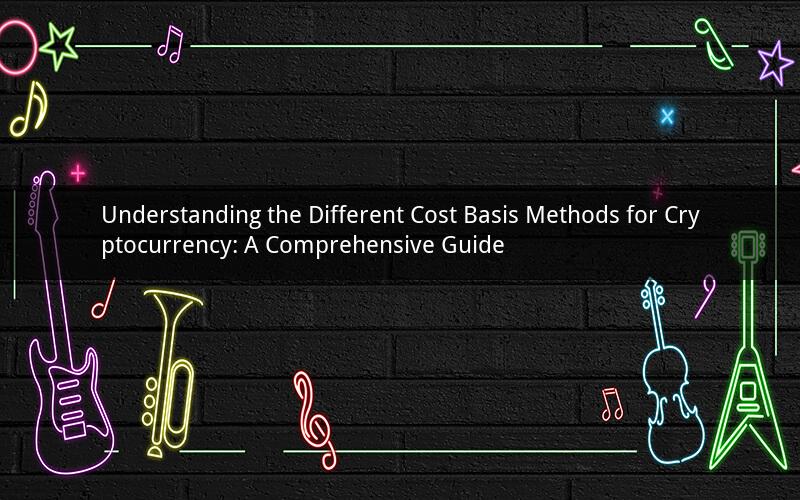
Introduction:
As the popularity of cryptocurrency continues to soar, so does the need for understanding the various accounting methods that can be used for determining the cost basis of digital assets. The cost basis method is crucial for tax purposes, as it helps investors calculate their capital gains or losses when selling their cryptocurrency. This article delves into the different cost basis methods available for cryptocurrency, providing an in-depth analysis of each method and their implications.
1. FIFO (First-In, First-Out) Method:
The FIFO method is the most commonly used cost basis method for cryptocurrency. It assumes that the first assets acquired are the first to be sold. This method is straightforward and easy to understand. When you sell a cryptocurrency, the cost basis of the asset sold is determined by the cost of the oldest coins in your possession.
Example: Let's say you purchased 10 Bitcoin at $10,000 each and later bought 5 more Bitcoin at $12,000 each. If you sell 5 Bitcoin, the FIFO method will consider the first 5 Bitcoin purchased at $10,000 each as the cost basis.
2. LIFO (Last-In, First-Out) Method:
The LIFO method is less common and can be more advantageous in certain situations. It assumes that the most recent assets acquired are the first to be sold. This method can be beneficial when the value of cryptocurrency has significantly increased over time, as it allows investors to minimize their taxable gains.
Example: Using the same example as above, if you had used the LIFO method, selling 5 Bitcoin would result in a cost basis of $12,000 each for those coins, reducing your taxable gain.
3. Specific Identification Method:
The specific identification method allows investors to identify which specific coins were sold and calculate their cost basis accordingly. This method requires keeping detailed records of all cryptocurrency transactions, including the date of purchase, price, and quantity of each coin.
Example: Suppose you have 10 Bitcoin purchased at different prices. When selling one of those Bitcoin, you can specify which one you're selling and calculate its cost basis based on the specific purchase price.
4. Average Cost Method:
The average cost method, also known as the specific identification method, calculates the cost basis of each cryptocurrency by taking the average of all the purchase prices. This method provides a simple and fair way to determine the cost basis without the need for detailed records.
Example: If you have purchased 10 Bitcoin at $10,000 each and 5 more Bitcoin at $12,000 each, the average cost method would calculate the cost basis of each Bitcoin as $11,000.
5. Holding Period Method:
The holding period method is not a traditional cost basis method but is essential for determining the tax rate applicable to your cryptocurrency gains. It categorizes your cryptocurrency as short-term or long-term based on the holding period. Short-term gains are taxed at your ordinary income tax rate, while long-term gains are taxed at a lower capital gains rate.
Example: If you held a cryptocurrency for less than a year before selling it, the gain would be considered short-term and taxed accordingly. Conversely, if you held the cryptocurrency for more than a year, the gain would be classified as long-term and taxed at a lower rate.
FAQs:
1. Which cost basis method is the most accurate?
The accuracy of the cost basis method depends on the investor's individual circumstances and preferences. The FIFO method is generally the most accurate, as it reflects the actual order of asset acquisition.
2. Can I switch cost basis methods during the year?
Yes, you can switch cost basis methods during the year. However, it's essential to consult with a tax professional before making any changes, as it may have implications for your tax liabilities.
3. Are there any limitations to the specific identification method?
The specific identification method can be time-consuming and requires detailed records of all cryptocurrency transactions. Additionally, it may not be suitable for investors who frequently buy and sell cryptocurrencies.
4. Can I use the average cost method for all my cryptocurrency investments?
Yes, you can use the average cost method for all your cryptocurrency investments. However, it's important to note that this method may not provide the most accurate cost basis for certain transactions.
5. How does the holding period method affect my tax liability?
The holding period method determines whether your cryptocurrency gains are classified as short-term or long-term, which affects the tax rate applicable to your gains. Short-term gains are taxed at your ordinary income tax rate, while long-term gains are taxed at a lower capital gains rate.
Conclusion:
Understanding the different cost basis methods for cryptocurrency is crucial for investors to accurately calculate their capital gains or losses and comply with tax regulations. By choosing the most suitable method for their individual circumstances, investors can optimize their tax liabilities and make informed decisions regarding their cryptocurrency investments.